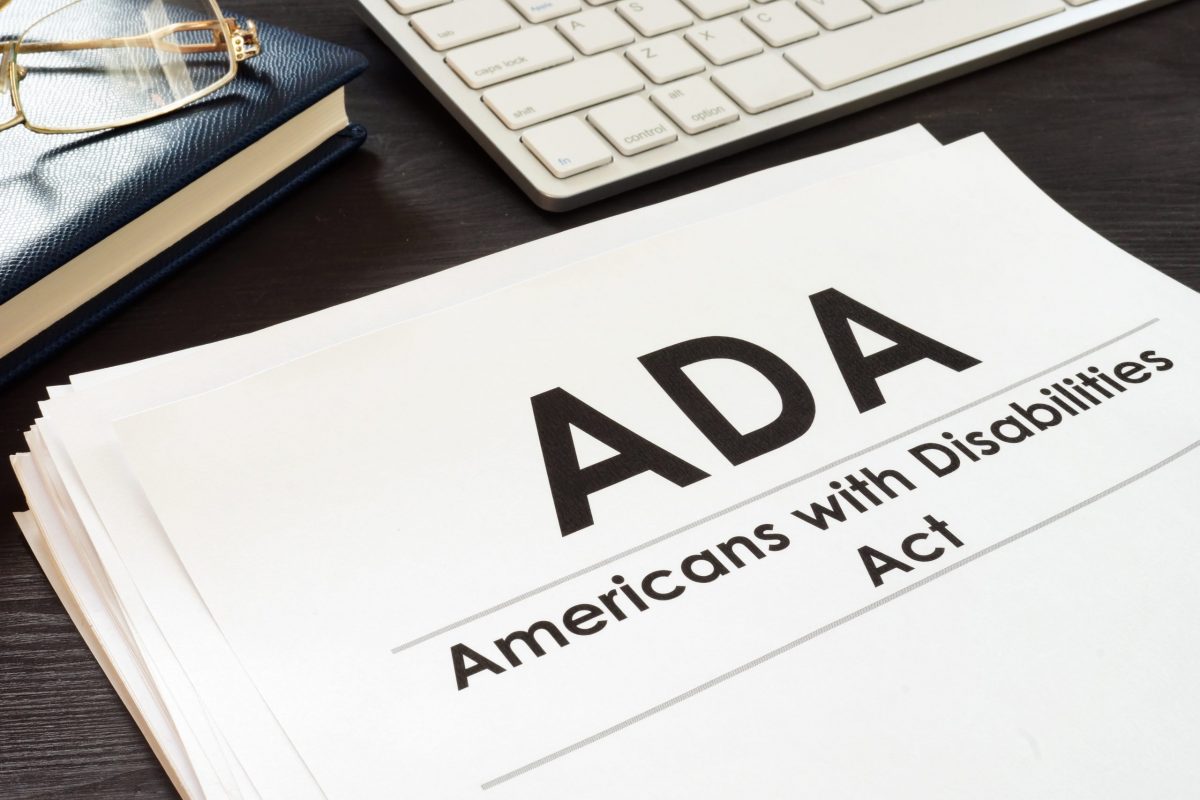
Federal Funding "Pause": Five-Alarm-Fire, Doused for Now
02.04.2025 | Linda J. Rosenthal, JD

Recently, there’s been lots of chatter in the media about the Americans with Disabilities Act (ADA). That’s because, on July 26, 2020, the nation celebrated the 30th anniversary of this landmark federal civil-rights legislation. Congress enacted the ADA in 1990 to “ensure that people with disabilities have the same rights and access to opportunities as people without disabilities.”
It’s been a very big deal for the (at least) 61 million adults in the United States who live with a disability. And that was before the COVID-19 pandemic which may add many more people to the ranks of the “disabled.”
The ADA is just one of a large and confusing pot of alphabet-soup-nicknamed federal laws. Many Americans have only a vague and fuzzy awareness of the ADA as a law that somehow helps disabled people. Otherwise, they don’t know much about what the law does, exactly whom it protects, who has to comply with it, and what happens if they don’t.
Nonprofits may wonder if the Americans with Disabilities Act has anything to do with them. The answer is yes: At least parts of the law apply to some nonprofit organizations and activities.
What we’ll do here is present the basics – a primer as it were – on the ADA and nonprofits. It’s not a simple law, and there are other federal, state, and local laws and rules – (also with acronyms that may ring a bell for many Americans) – that protect disabled and other people who have been marginalized, forgotten, or not treated fairly in the past.
The Americans with Disabilities Act gives “protections against discrimination of people with disabilities in employment, education, health care, recreation, transportation, and housing.”
There are several sections of the law: “The ADA prohibits discrimination on the basis of disability in employment, State and local government, public accommodations, commercial facilities, transportation, and telecommunications….”
The key parts of the law affecting the nonprofit sector are those dealing with employment and public accommodations.
First, Title I of the ADA requires “employers – including religious entities – with 15 or more employees to provide qualified individuals with disabilities an equal opportunity to benefit from the full range of employment-related opportunities available to others. For example, it prohibits discrimination in recruitment, hiring, promotions, training, pay, social activities, and other privileges of employment.” The ADA also “restricts questions that can be asked about an applicant’s disability before a job offer is made, and it requires that employers make reasonable accommodation to the known physical or mental limitations of otherwise qualified individuals with disabilities, unless it results in undue hardship.”
Second, in How the Americans with Disabilities Act Affects Small Nonprofits (April 1, 2020), MissionBox Global Networks offers helpful examples of when nonprofits of any size may be covered by the “public accommodations” part (Title III) of the ADA, “which bans discrimination by people who own, operate, lease to or rent from places of public accommodation.” This list includes, but is not limited to:
Certain houses of worship and other religious organization, though, are exempt from these ADA rules.
This law specifies that a covered beneficiary of this law must have a “physical or mental limitation that substantially impairs a major life activity, such as seeing, hearing, walking, breathing, doing manual tasks, standing, lifting, working or thinking.” In 2009, Congress amended the Americans with Disabilities Act to add more diseases (including epilepsy, diabetes, multiple sclerosis, major depression and bipolar disorder) under the umbrella of ADA protection.
Simply put, the “legal definition of “disability” is broad – and growing.” The Equal Employment Opportunity Commission (EEOC) – the federal agency in charge of administering and enforcing the ADA – has been repeatedly asked in the past few months whether COVID-19 is a “disability” under the Americans with Disabilities Act. It has “so far resisted the invitation to answer that question,” but that could change. In the medical community, a “consensus is emerging … that COVID-19 is taking a severe toll on its victims physically and mentally and that these effects are lasting much longer than expected.”
Note that ADA protections extend not only to employees and direct beneficiaries of a nonprofit’s services but also to others including volunteers and the general public.
The federal Equal Employment Opportunities Commission (EEOC) enforces workplace anti-discrimination laws, including but not limited to the Americans with Disabilities Act (ADA). There are stiff penalties and lots of trouble for noncompliance. See EEOC publications including this one with information about compliance and sanctions. The agency with jurisdiction over the public accommodations parts of the law is the Justice Department. See Americans With Disabilities Act: Title III Highlights (April 26, 2016).
It’s important to check state and local laws. Many jurisdictions around the nation have laws and rules similar to that of the federal Americans with Disabilities Act, but for employers with fewer than 15 employees. Also, there may be critical differences in how “disability” is defined.” For example, California’s law similar to the ADA is “more stringent” than the federal counterpart.
